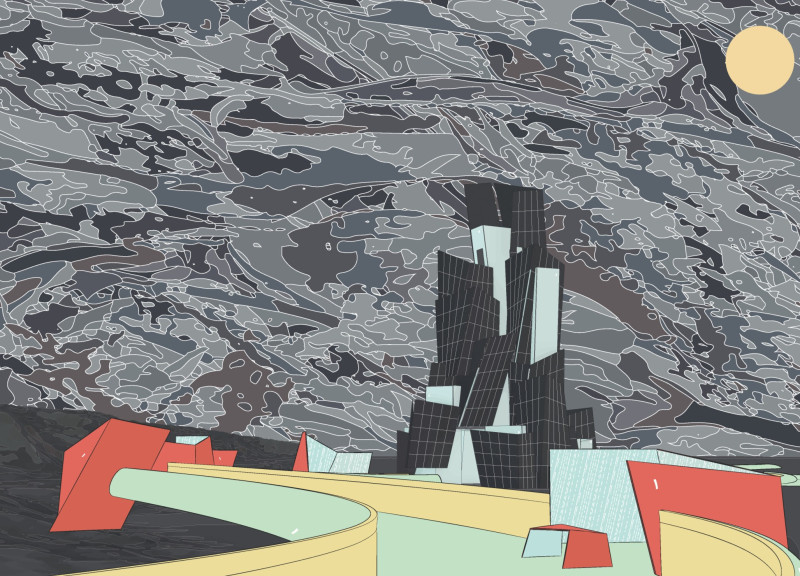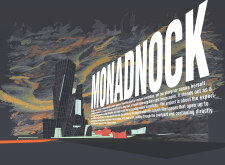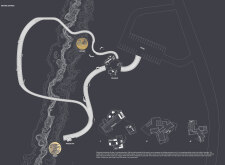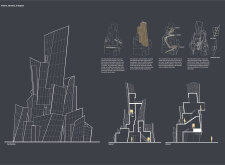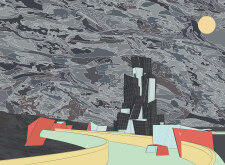5 key facts about this project
The Monadnock project is located in Iceland, designed to create a deep connection between visitors and the surrounding landscape. The building reflects the natural forms present in its setting while incorporating geometric shapes that encourage exploration. Pathways lead through canyon-like spaces to significant geological features, such as the Grotagja and Vogagja caves, enhancing the experience of the nearby natural baths.
Spatial Organization
The layout of Monadnock is clearly defined, with public and private areas thoughtfully separated. Visitors enter through a protected courtyard, which allows access to various functions without confusion. Key public spaces, including a café and waiting areas, are located away from private offices and storage rooms. This organization directly supports ease of movement, making it simple for visitors to navigate the building.
Vertical Circulation
Vertical movement plays a crucial role in the design. Narrow stairways guide visitors up to lookout points within the structure. These elevated areas provide expansive views of the Icelandic landscape, enriching the overall journey through the building. This focus on upward movement encourages a connection between the architecture and the vast environment surrounding it.
Materiality
The materials used in the project include a steel frame structure combined with an interlocking facade for strength and visual appeal. The interior incorporates prefabricated metal panels along with ethylene tetrafluoroethylene (ETFE) paneled steel blocks, providing durability while reflecting the natural forms outside. The selection of materials not only meets practical needs but also enhances the experience within the building.
Natural Light
A central shaft allows natural and artificial light to enter, creating an atmosphere reminiscent of natural caves. This blend of light enriches the space and encourages visitors to engage with both the architecture and the external landscape. The careful consideration of light and form enhances the experience and connects those inside to the beautiful Icelandic surroundings.


